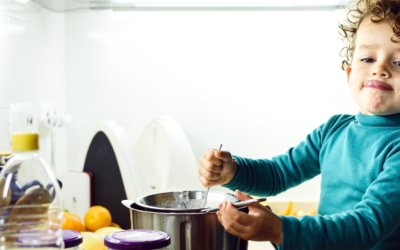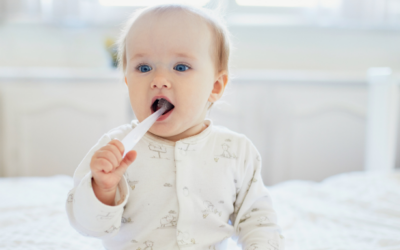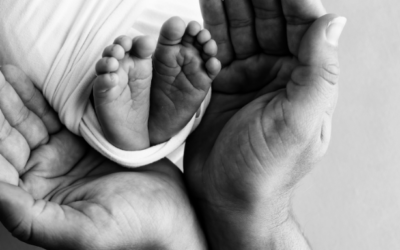There will be times when your baby or toddler is clingy and demands your attention a lot. It can be tough as a parent to have a clingy toddler. It can be tiring and wearing – we’re all human after all!
Dr Zara Rahemtulla, a clinical psychologist from Gentle Journeys shares her top tips on why little ones can be clingy and how best to deal with it.
What is clinginess?
If you’ve got a clingy toddler, you’re not alone! Clinginess is extremely common and is a behaviour that all children display at some point during their development.
Examples of clinginess are: when a child cries and shouts because they have to separate from their parent (e.g. to go to nursery, or parent goes out to run errands, etc.), they want their parent’s attention more than usual, they are constantly seeking physical contact with their parent (e.g. more hugs or physical touch), they want to be in the same room as their parent all the time and/or they act younger than their age at times.
Clinginess vs Separation Anxiety Disorder
Clinginess is different from separation anxiety disorder, which is a significant fear or anxiety of strangers and the child cries inconsolably and shows extreme distress in these situations. (NICE, 2020). Mild forms of separation anxiety can occur in children and is usually something that naturally passes, however if this is prolonged and is getting in the way of your baby/child having new experiences then it is important to check this out with a health professional.
Clingy toddlers: It is developmentally normal for a child to go through?
Sometimes it can feel like there is no obvious reason for clinginess, and other times there can be clear reasons for the change in your child’s behaviour. Levels of clinginess can also be related to your child’s developmental stage; for example, children can become more clingy around 8-10 months, 2 years and 3 years old.
This is often due to them making big developmental leaps and becoming more independent in various ways. For example, around 8-10 months babies may be crawling or walking, at 2 or 3 years children often become toilet trained and around 2-3 years children may start to separate from their parents, attending nursery or pre-school. All of these events can feel exciting to a toddler, but also overwhelming and strange at the same time, which can trigger increased clinginess to their caregiver.
Another important reason why your child might become more upset when you have to leave their side is when there are significant changes to their routine or daily life. For example, the arrival of a new sibling can be a particularly big upheaval for the first born as they now have to wait longer for their parents’ attention, there is less focus on them and their needs and they have to share their parent’s love. This is a life event that takes some time to adjust to, and it is very common for toddlers to become more clingy, tearful or angry at this point.
How multiple lockdowns affected clinginess in our toddlers and children
Of course the single, biggest change to our lives in recent times has been Covid-19. What we knew as our familiar, daily routines were completely turned upside down. We spent so much time at home, that it took us a bit of time to get back used to where we were before. For some, that can be more difficult than others. And for those born in those lockdowns, it can be even more difficult.
It is normal and expected for babies and toddlers to show more clingy behaviours and become more upset or distressed when their parent(s) try to separate from them. For those babies who spent two years in the care of only their parents or a few close adults, going to a baby group, nursery or a social gathering can feel a little daunting. It may take more time for them to integrate these situations into their ‘new normal’ and feel at ease within them.
Ways to support your toddler through clinginess
1. Start by leaving them with someone familiar
If you know you will be separating from your toddler soon, build up to this and start by leaving them with someone who is familiar to them. Start by leaving them for a few hours, then gradually longer, for an afternoon and then the whole day. Similarly, when at home, try popping out of the room for a very small amount of time and coming back, whilst at the same time saying “mummy is just going into the kitchen and then I will be back”. Talk to your child whilst in the kitchen so they know you are still there.
2. Talk to your child beforehand
No matter what age they are, always try and talk to your child about what will happen, before you are due to leave them. This gives them time to process what will be happening and ask questions or get reassurance from you before they separate from you. Bringing up the topic a week in advance and then mentioning what will happen in the few days running up to the event will help children prepare.
For example, “tomorrow mummy is going to be out for the day and grandma will be looking after you. She is going to play with you lots while mummy goes out. Then I will come back and make your dinner and put you to bed”. Giving children a reference point to when you will be back is really important. If they know that you will be back at dinner time, they will hold this in their mind.
3. Do not sneak out on your child
It can be tempting to sneak out and avoid saying goodbye to your little one when you leave. Letting them know you are going and will be coming back is so important to them so they can hold this in their mind while you are away. If they don’t get to say goodbye to you they will be wondering where you are, why you left and if you are coming back, which can distress them even further.
4. Use a transitional object
A transitional object is an object that your child can have in replace of you while you are gone. It is often an object that smells of you, so your child can be comforted and reminded of you if they miss you. A scarf, t-shirt or another item that has your scent is useful here.

5. Don’t dismiss or ignore their clinginess
Dismissing or ignoring your child’s plea for you will actually just make their clinginess worse. This is because clinginess is triggered when a child is feeling more vulnerable or less confident, therefore they need the extra support and acknowledgement from their caregivers at this time. Giving them those extra cuddles, instead of pushing them away, will actually reassure them and give them more confidence in the long run, leading them to be less clingy!
6. Use games and play
Play is such an important tool for children. They will often ‘play out’ their difficulties or worries and this can be really cathartic for them. For example, it might be peek-a-boo for your 10 month old helps them establish when mummy/daddy disappears she/he comes back, or your toddler pretending to be a baby helps them come to terms with jealous feelings about a new sister or brother arriving and sharing their parent(s).
7. Listen and acknowledge their feelings
Your child may tell you with their cries or words that they don’t want to leave you. One of the most helpful things you can do to help a clingy toddler is genuinely listen to your child as they express themselves to you, and acknowledge their experience. Their feelings are so big for them in these moments, but research has shown that when a child’s feelings can be heard and empathised with by their caregiver, feelings of distress do decrease. If you can get down on your child’s level, touch them in a gentle way and say, “you really don’t want mummy to go. I understand darling. It is hard to leave mummy/daddy sometimes”, “you’re feeling so sad that mummy has to go out. You will miss me. It’s normal to feel like this.”

8. Being aware and managing your own response
Try to make saying goodbye to your child a positive experience, however worried or sad you might be feeling about your child’s tears. By giving your child a positive experience of a goodbye and reunion they will remember this and feel more confident during the next separation. Perhaps separations are tricky for you as a parent in some way and this might be important to reflect on, so you can be aware when these feelings arise for you.
If you feel like you would like more support with understanding your child’s clinginess, or you have worries about separating from your child, please get in touch with us at Gentle Journeys, www.gentlejourneys.org. Instagram Gentle_Journeys or Facebook GentleJourneys
More you might like:
Rainy day activities for toddlers






0 Comments